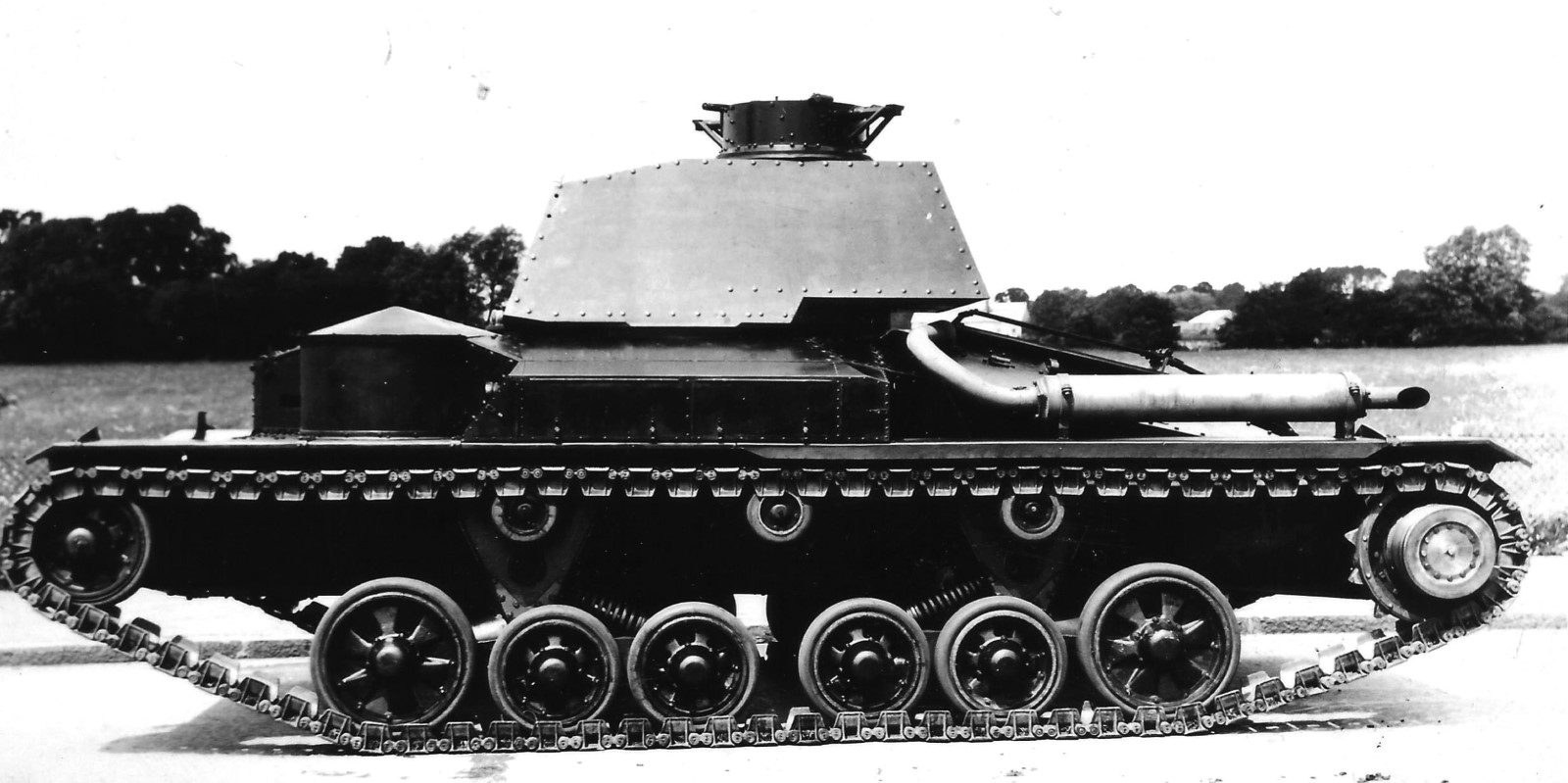
A9E1, with its gun removed, was also used in 1940 for submerged river-crossing trials in the Stour at Christchurch. The prototype Medium Mark IV (A9E1) in its original form. It had a nasty habit of shedding its tracks and had to be redesigned, although it still featured Sir John Carden’s `Bright Idea’ suspension.
During 1940 the prototype A9E1 was used to test out the idea of an amphibious tank. While the production tanks had been of riveted construction the prototype had used bolts, many of which were missing. The two machine gun turrets added extra problems, and the light-weight tank was surprisingly buoyant. Despite these problems the A9 successfully crossed the River Stour underwater on 24 May 1940.
Cruiser Tank Mk I
(A9)
What became known as the A9 cruiser tank Mk I was originally
conceived as a medium tank to replace the Vickers A6 medium tanks Mks I and II.
Development work had started in 1934 under the direction of Sir John Carden of
Vickers-Armstrongs, with a view to coming up with a cheaper and more effective
design. The A9 was notable for being the first British tank to incorporate a
ballistically designed hull, albeit that the maximum thickness of armour was
not sufficient and the machine-gun turrets were vulnerable. It was also the first
to be fitted with a centrally positioned hydraulically powered turret, and was
the first to incorporate the Vickers-Gerlach tank periscope, rather than using
direct-vision heavy glass blocks. The A9 was also a pioneer in deep wading and,
in 1939, one example was successfully driven completely submerged.
The tank was relatively small: the low hull had a length of
just 231in and a width of 100in. Riveted construction was used throughout, with
a maximum thickness of armour of 14mm, giving a combat weight of around 12
tons. There was no separation of the driving and fighting compartments and the
hull must have been a tight fit for the standard six-man crew. Vickers had
proposed that a Rolls-Royce Phantom II engine be used, but production vehicles
were powered by a rear-mounted AEC A179 six-cylinder petrol engine, producing
150bhp from 9,630cc, and driving the rear sprockets through a five-speed manual
gearbox. Utilising the Vickers ‘slow motion’ suspension, the road wheels were
arranged in threes on a pair of bogies, the front and rear wheels on each side
being of larger diameter. A large single spring was provided for each bogie,
together with a Newton and Bennett telescopic hydraulic shock absorber. Top
speed was in the order of 25mph on the road and 15mph across country, with a
range of 100–145 miles.
For the prototype, the main gun was a 3-pounder (47mm) but
all production vehicles were armed with the standard 2-pounder (40mm), together
with three Vickers .303in water-cooled machine guns: one coaxial with the main
gun, the other two in auxiliary turrets on either side of the hull. A fan was
fitted in the hull to clear the gun fumes. There was also a close-support
variant–cruiser tank Mk I CS–which mounted a 3.7in howitzer in place of the
standard 2-pounder (40mm) gun.
A total of just 125 vehicles were constructed: fifty by
Vickers-Armstrongs and seventy-five by Harland and Wolff in Belfast. The Mk I
cruisers saw service in France in 1940 and in the Middle East the following
year; however, although the main gun was effective against the Italian tanks,
it was no match for the more sophisticated German machines. The crews also
complained that the design was unreliable and was prone to shedding tracks.